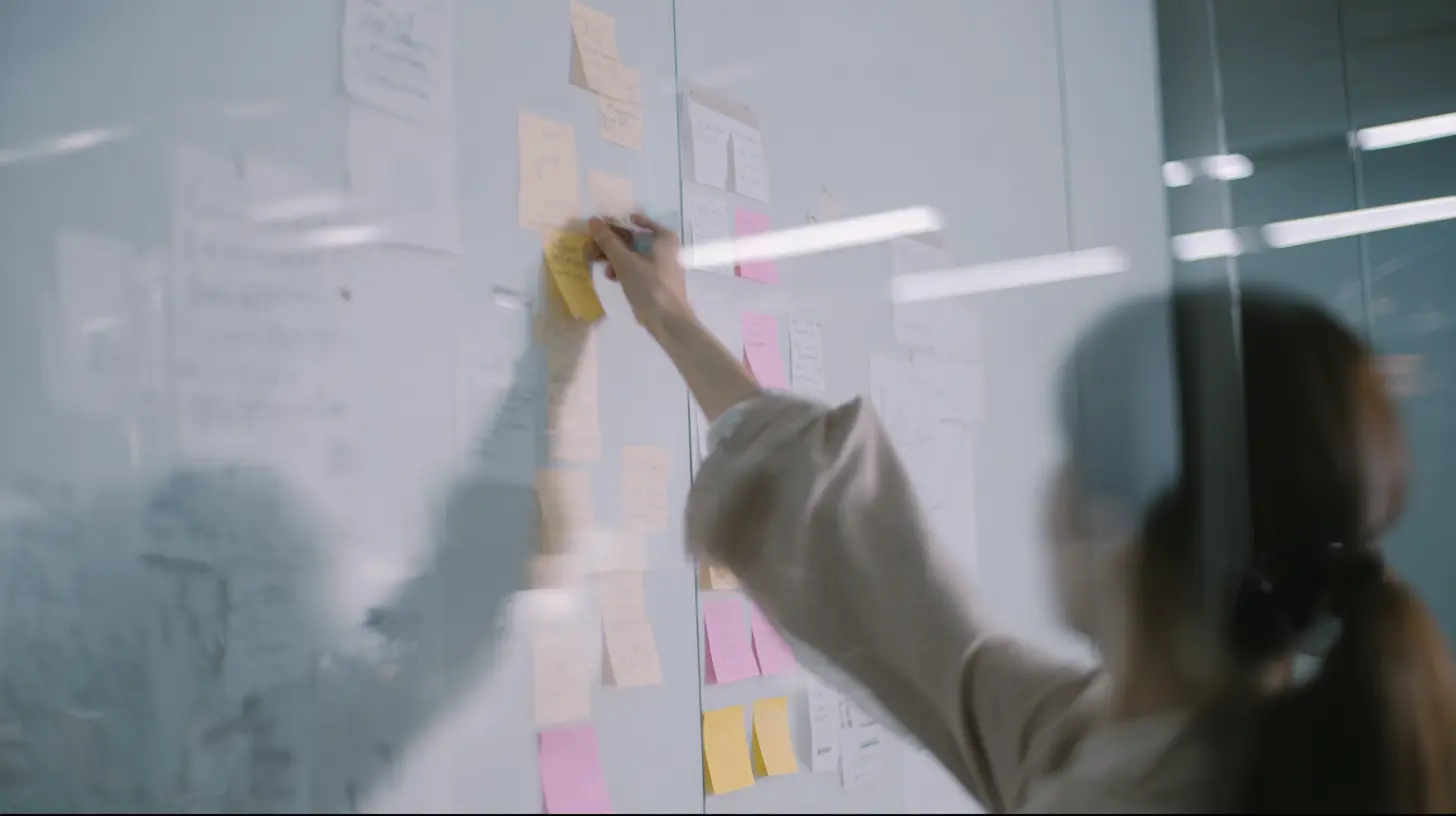Designing Circular Business Models: From Ideation to Implementation
In the current environment, we see that more and more companies are looking for ways to innovate their business models in order to create sustainable alternatives to current solutions. Implementing a circular ecosystem that solves an environmental problem while offering an attractive value proposition to customers is the ultimate goal.

As discussed in the previous article, the Circular Navigator is a helpful tool for this. In the following article, we take a deeper look at the steps that are needed to get from generating new and sustainable ideas to implementing these.
Patterns for developing a Circular Ecosystem
Based on the review of more than 200 successful sustainable businesses in cooperation with the Unversity of St. Gallen, a classificatory framework has been developed. This framework categorises four types of patterns crucial to creating a circular ecosystem. Together, these four pillars allow to shape a financially valuable and attractive offering while simultaneously achieving sustainable resource loops.
Four types of patterns to create a circular ecosystem
- Close the loop: What makes the solution circular? Reusing products, but also creating products that can savely enter the biosphere again.
- Improve the loop: Circularity alone does not mean that the solution is sustainable (think rebound effects). With this category, sustainable patterns are presented that improve the loop. These can range from increasing the longevity of the product, making it more efficient, increasing its functionality (to make others productsunnecessary) or decreasing the number of products being used.
- Monetise the loop: There are many ways to monetise circular solutions. The goal is always to find an attractive solution for the customer that simultaneously ensures the recovery of the produts. The question then becomes how the partners in the ecosystem will work together, how value can be created for all of them and how the revenue model can be designed across the whole value chain.
- Excite the loop: Last but not least, always keep the customers in mind. Excite them by creating solutions that are engaging and offer an attractive value proposition - think about options such as additional services, transparency, or platforms.

The company should fundamentally ideate new value propositions and value creation mechanisms along a circular ecosystem. Two methods of ideation can be distinguished – the structured and unstructured method. For the structured ideation, you start with generating ideas from patterns of the first pillar and consequently move through the others. This method is more manageable for the participants but creates a path dependency as certain patterns from the last pattern are not applicable to the ideas you created from the earlier categories.
Using the unstructured method, all solutions are basically the result of a freestyle brainstorming. This is beneficial due to the flexibility and adjustability, however, it is significantly more demanding for the participants.
Integrate: Designing a Circular Ecosystem with the Circular Canvas
Once you’ve come up with a variety of ideas, the next step is to design a holistic ecosystem from them. For this purpose, the Circular Canvas helps to simplify the complexity of the circular economy, creating a high level overview of the circular value chain by merging the material flow and the business perspective.
The interior parts of the circle are composed of three phases: make, use and recover. The exterior circle has the take and dispose phase. These follow the logic of the circular economy, forcing you to come up with solutions that close the loop.
The purpose of the canvas is to sort, select, create and design the ecosystem. The best ideas are selected and integrated to the canvas - ask yourself: do these ideas work well together, are other ideas better suited, are some gaps left? You always create your ecosystem around a product & shared value of proposition (think about it: there are no circular services - only services that facilitate the circular flow of materials).
In the corners of the canvas, four strategic factors are shown. These factors are very important for shaping the ecosystem.
The Circular Canvas consists of four strategic factors
- Product design – In order to recover products, they need to be designed properly. Here is the place to gather the respective ideas.
- Metrics - The status quo has to be determined as well as the the possibility to track the progress.
- Financing– There is a time lag from the creation of the circular product to the recovery. It is not easy to hold together the ecosystem for years until it is functioning and a lot of thought needs to be put into how to achieve this.
- Packaging & Logistics – Between all value creation steps, the products need to be transported. Think about ways to ensure that these steps are as sustainable and efficient as possible.
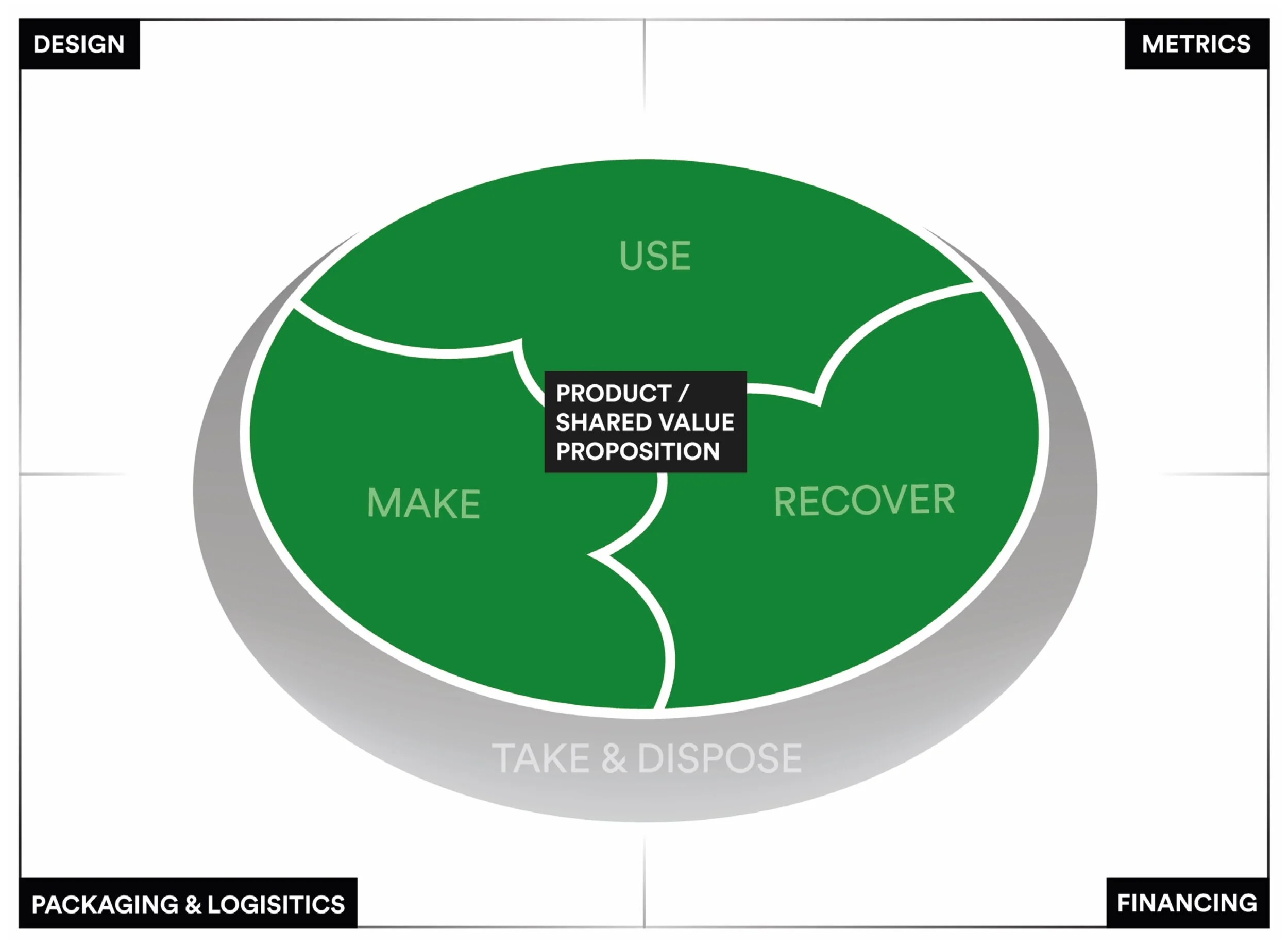
Afterwards, we propose to take a deeper look into the activities that you want to handle and the ones that are important and need to be realized by a partner. Create a sustainable business model and use tools such as the reverse financials to ensure that your concept can be realized profitably.
Creating a common circular vision
The fifth step Imagine is a key element of circular transformation. A common vision is formulated which addresses the purpose of the ecosystem and shared value proposition. This is fundamental for the alignment within the company, potential partners, customers and employees. The goal is to motivate and to create a shared understanding of why the activities are done. Without a convincing vision why the company should change, success depends mostly on luck and circumstances. The most common challenges in the circular economy transformation process is the lack of awareness regarding the need for sustainable innovation and a hesitant company culture.
For example, Tesla‘s vision is to accelerate the world’s transition to sustainable energy. Patagonia aims to build the best product, cause no unnecessary harm, and use business to inspire and implement solutions to the environmental crisis. Wear2Wear has circular solutions in which many companies are involved in, their vision is to manufacture high-quality textile products from 100 percent recycled textiles. Interface’s mission is to overcome the biggest challenge facing humanity: reverse global warming. There is no formula to create the company vision, but it is very important to have the meaning and company goal described as precise as possible.

Incorporating circular ecosystems
Once solutions have been created and designed, the next step is to incorporate the partners. It is essential that the invovled companies are able to adjust their business models and create shared value propositions with a measurable impact. Getting partners on board is the first step. Before finding and approaching partners it can be helpful to have a plan and an ideal vision for the ecosystem on board. The better the understanding of the envisioned ecosystem is, the better suitable partners can be identified. Sometimes, partners are onboarded earlier in the process, but if you have no common starting point, it works best to offer your own vision and solution as a basis for cooperation. This takes a lot of time, therefore it is important to make sure to identify the most important partners and the ones that are interchangeable. Align on the ecosystem and value proposition and iterate the first steps together when needed.
After onboarding the neccessary partners, each company needs to implement the solution within their boundaries and coordinate the changes within the company and across the ecosystem. Motivation, communication and coordination are key for success.
These implementations often need to be accompanied by a cultural change for the involved companies, since they are on very different levels of implementing circularity and sustainability into their organisational structure. Depending on that, various barriers and challenges are to be faced.
‘I strongly believe in the cooperation of companies. I call it the integrated textile line.’
– Tommy Verminck, Decontex
Timing is very crucial, as in some of these ecosystems, the recycling partners will only start being involved on an operative level after 3 to 4 years. It is important to continue motivating the partners to stay on board, which is why a common vision and story is so important. An orchestrator within one or two companies, who feel obligated to realize the solution really need to drive it forward. Sometimes, partner companies stop collaborating or have internal struggles. This is the reason why a driving motivator who feels responsible is fundamental.
Oftentimes this also involves cooperating with competitors to make solutions financially viable. Circular ecosystems cannot work with one company alone and thanks to the collaboration with competitors, attractive solutions can be put into place.
Implementation and time for action
Last but not least, the planned circular solutions need to be realised. For each company, implementing the ecosystem takes place at the individual business model level. As is already known from the business model innovation perspective, it is crucial to move in small steps to test quickly. Basically, implementation is about making each business model work by testing the most important assumptions and aspects of it as quickly as possible to make sure the end-customer receives the solution they want. The most common issue here is to lose sight of the customers as the internal perspective (within the company and the ecosystem) is so complex that it demands a lot of attention. However, creating solutions that are not aligned with customer needs is a surefire way for failure.
Richard Stechow
Conclusion
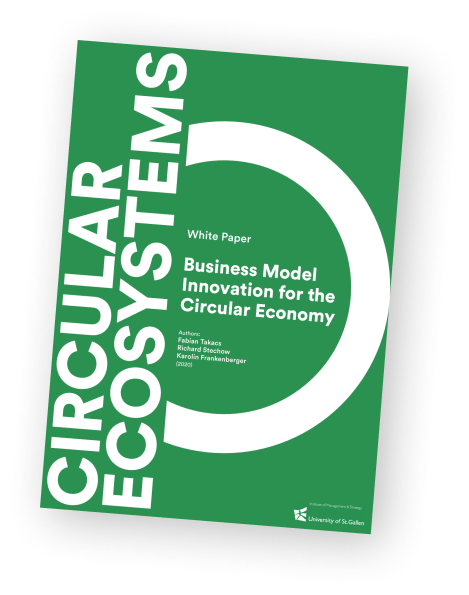
As mentioned before, a lot of time is needed to design and then adjust the business model in alignment with envisioned solution and ecosystem. A systematic approach helps to better handle the complexity - have a large plan, but realize the solution step-by-step. For the Circular Economy, it is neccessary to make sure that everyone involved understands the goal and vision - and why these need to be pursued.
Do not let yourself be overwhelmed by the high complexity, solutions can be designed systematically - the most important part is to start acting now to actively shape these solutions and position your company for (circular) success!
Interested in additional information on circular business models? Take a look at The Circular Navigator and download the corresponding whitepaper on Business Model Innovation for the Circular Economy.




.svg)
.svg)
.svg)










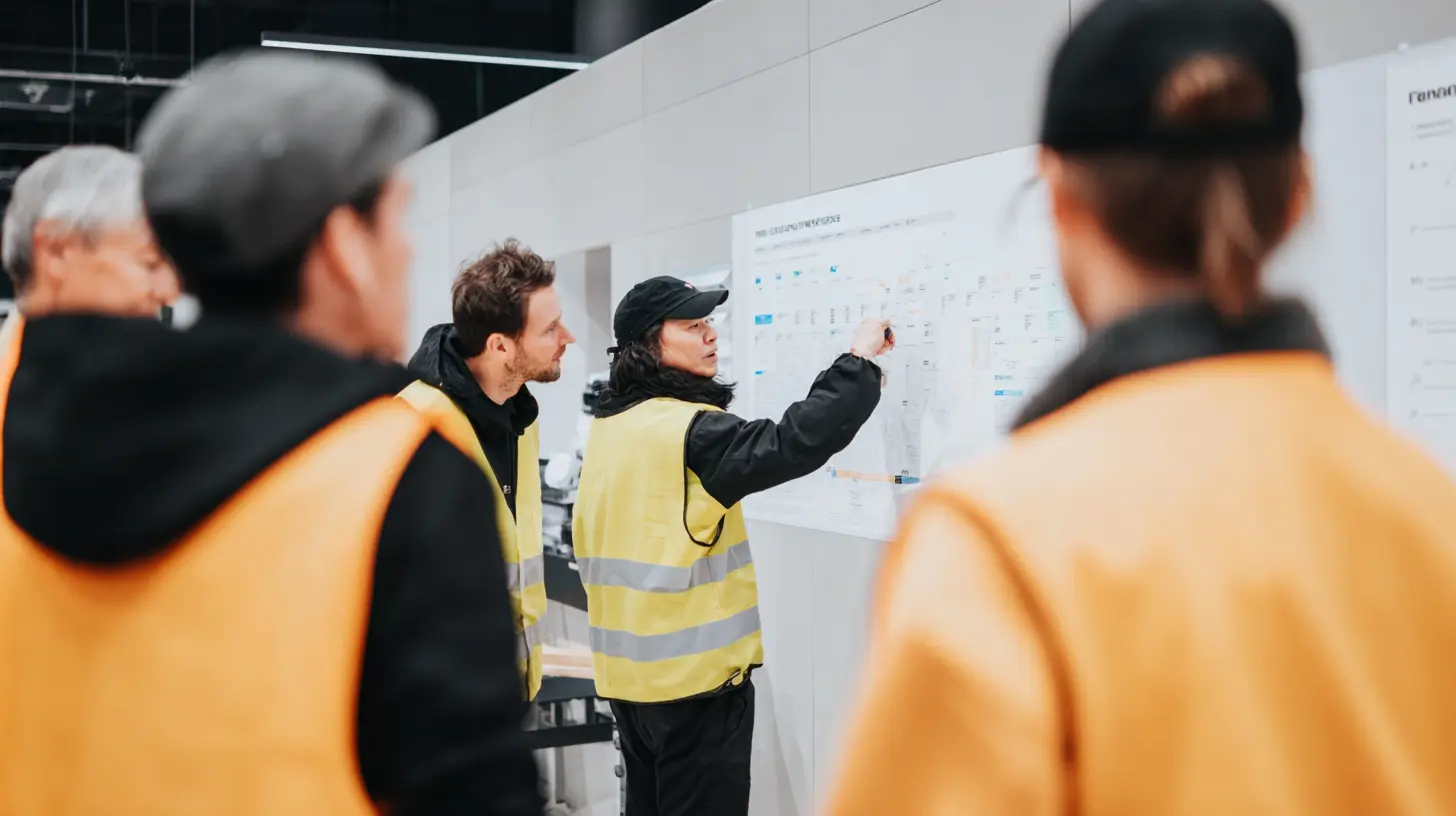









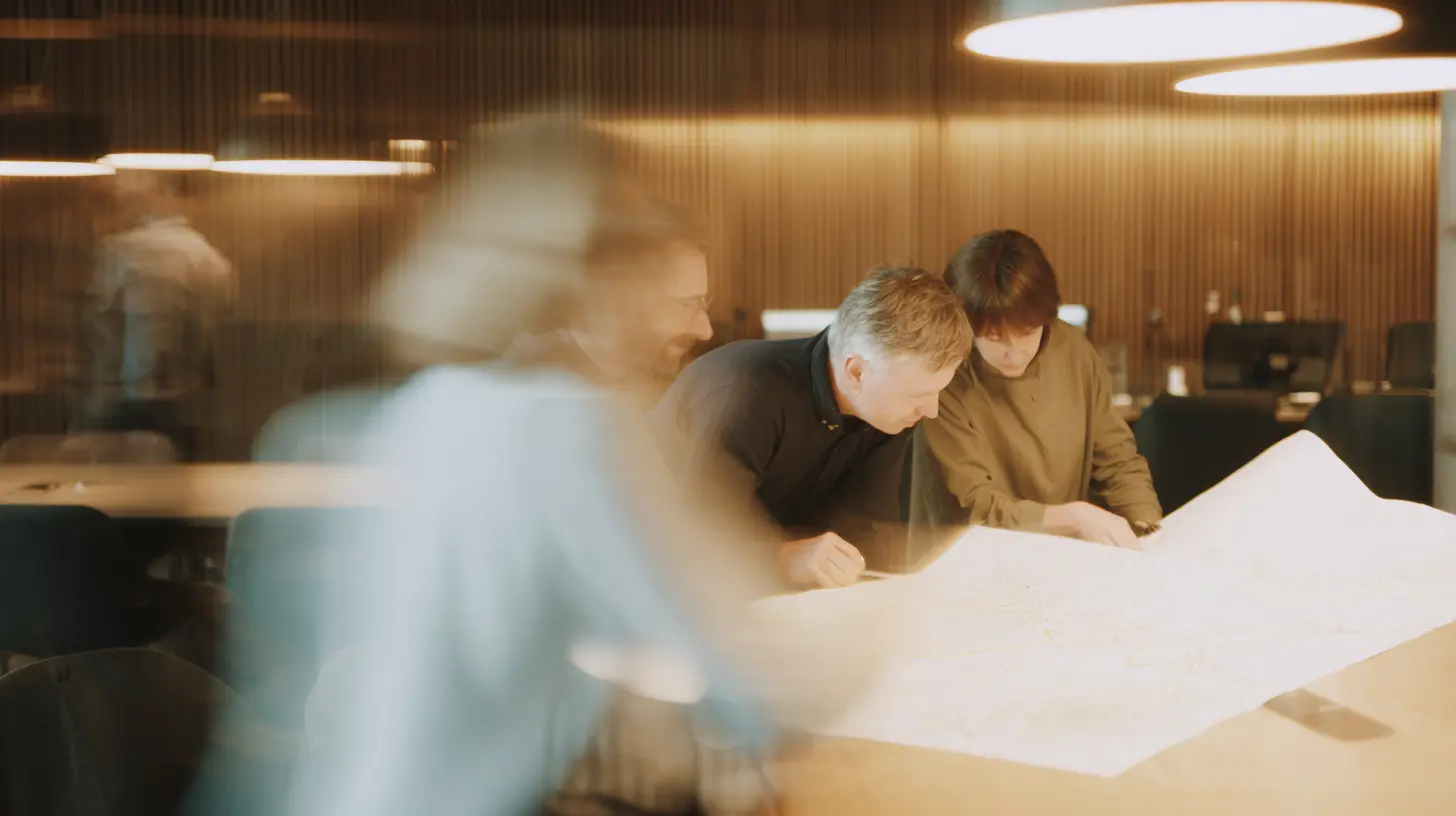



.webp)



